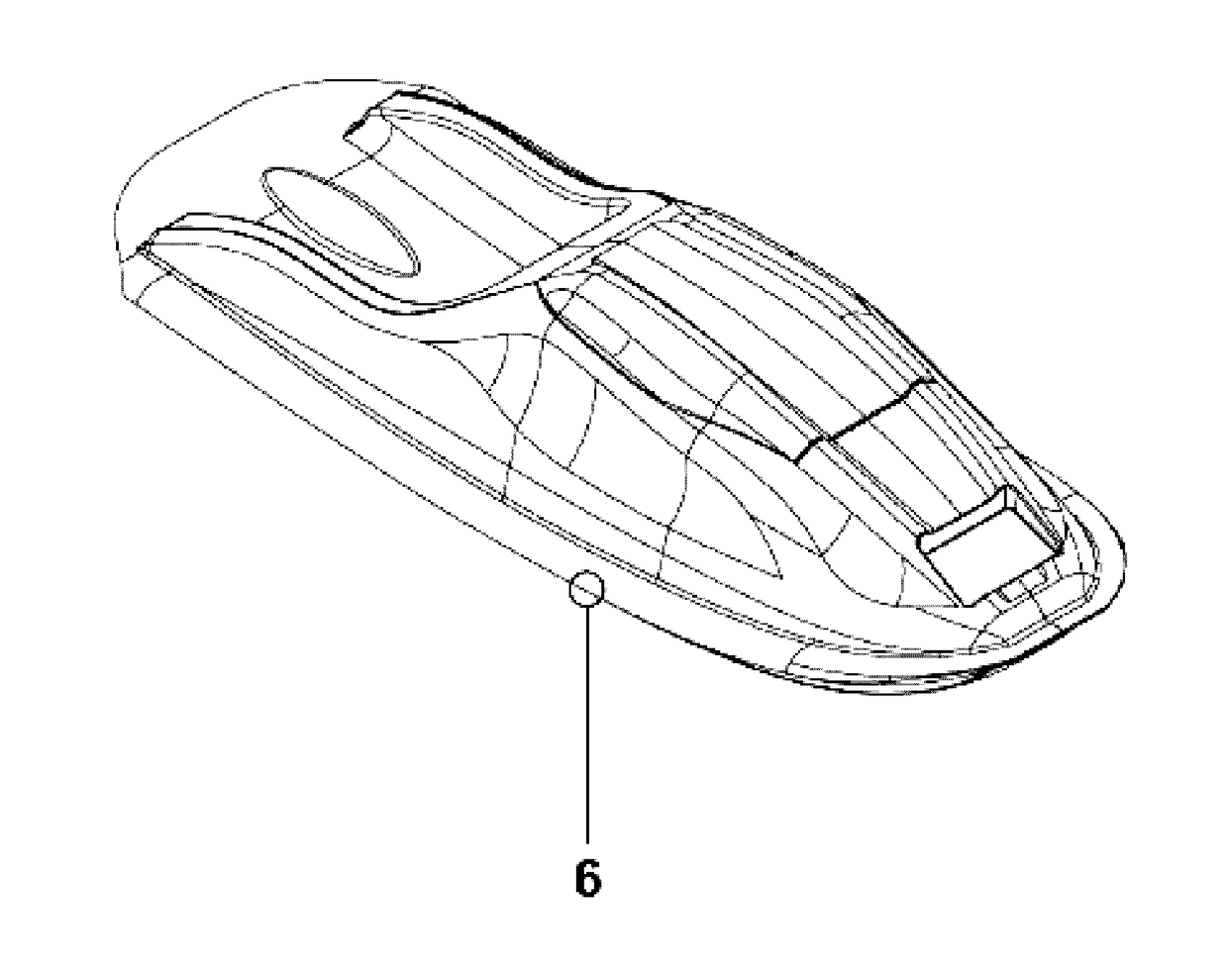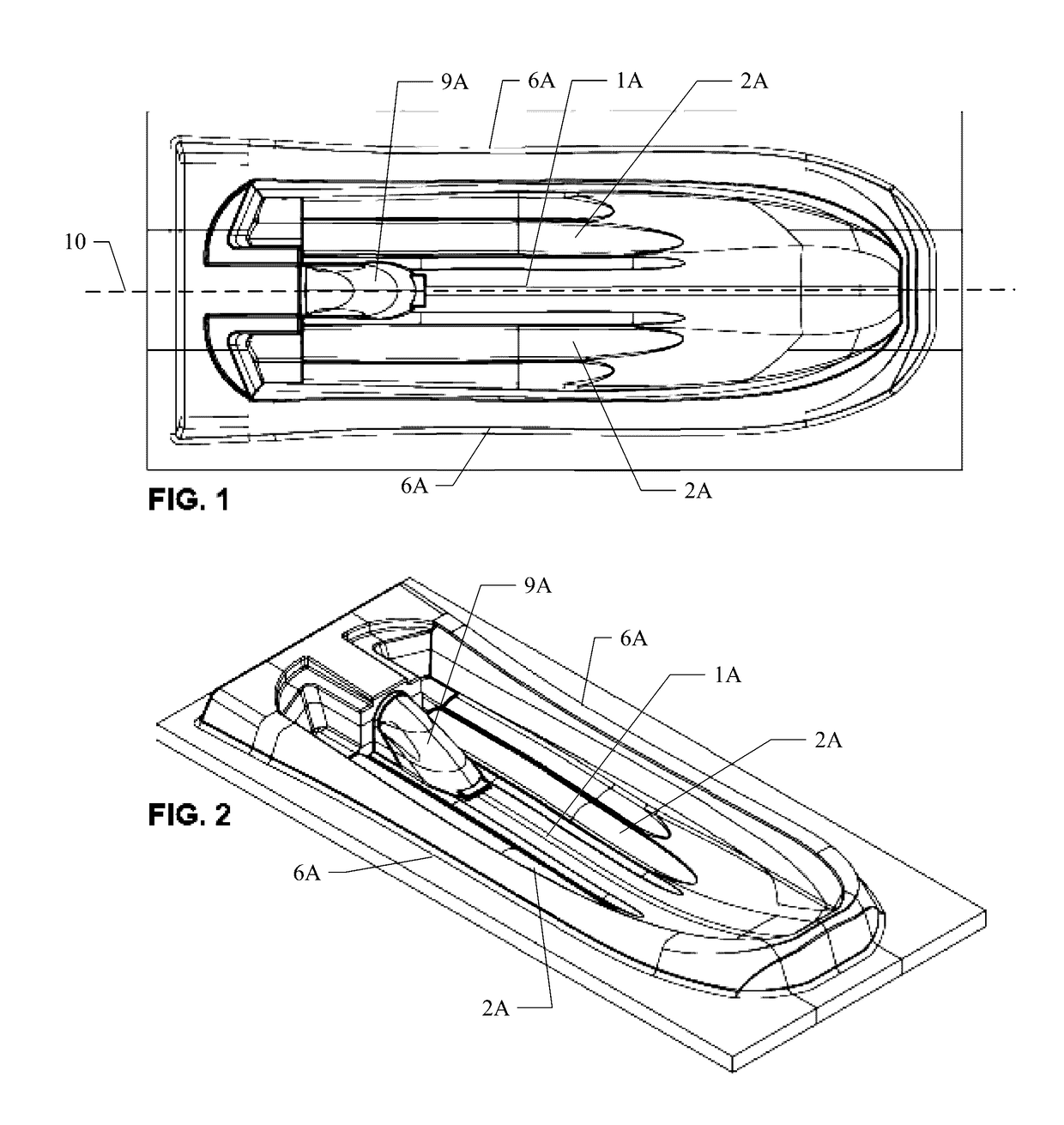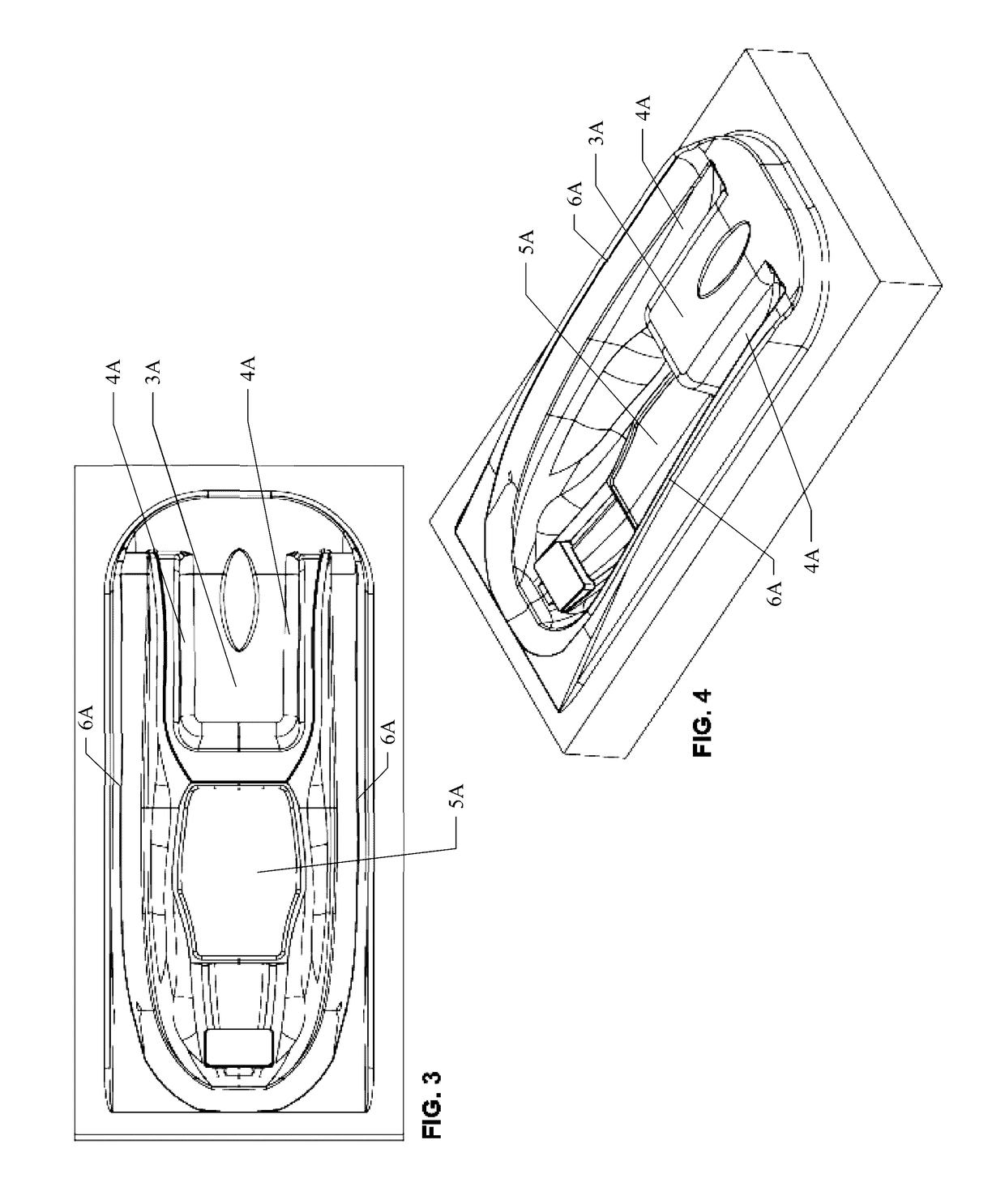Personal watercraft fabrication using thermoforming
a technology of thermoforming and watercraft, applied in the field of thermoforming and personal watercraft fabrication, can solve the problems of increasing the cost of fiberglass manufacturing, and outpacing the design and manufacturing of watercraft engines, so as to reduce manufacturing costs, increase the consistency of parts, and reduce the effect of manufacturing tim
- Summary
- Abstract
- Description
- Claims
- Application Information
AI Technical Summary
Benefits of technology
Problems solved by technology
Method used
Image
Examples
Embodiment Construction
[0033]Reference will now be made in detail to the example embodiments illustrated in the accompanying drawings. Wherever possible, the same reference numbers will be used throughout the drawings to refer to the same or like parts. Personal watercraft and personal watercraft fabrication using a thermoforming process are described herein.
[0034]FIG. 1 is a top view of a personal watercraft thermoforming bottom hull mold. FIG. 2 is a perspective view of a personal watercraft thermoforming bottom hull mold. As shown in FIGS. 1 and 2, a mold can be used to fabricate a watercraft bottom deck / hull (e.g., the bottom section of the watercraft) using a thermoforming process. In an example embodiment, the illustrated mold includes a first feature 1A used to form a mid-rocker 1 in the fabricated bottom hull (e.g., see FIGS. 7, 8, and 15). The mid-rocker 1 is produced by a low, generally flat recessed feature 1A in the mold running longitudinally at the centerline 10 from the bow to a pump intake...
PUM
| Property | Measurement | Unit |
|---|---|---|
| volatile organic compound | aaaaa | aaaaa |
| physical | aaaaa | aaaaa |
| pressure | aaaaa | aaaaa |
Abstract
Description
Claims
Application Information
 Login to View More
Login to View More - R&D
- Intellectual Property
- Life Sciences
- Materials
- Tech Scout
- Unparalleled Data Quality
- Higher Quality Content
- 60% Fewer Hallucinations
Browse by: Latest US Patents, China's latest patents, Technical Efficacy Thesaurus, Application Domain, Technology Topic, Popular Technical Reports.
© 2025 PatSnap. All rights reserved.Legal|Privacy policy|Modern Slavery Act Transparency Statement|Sitemap|About US| Contact US: help@patsnap.com



